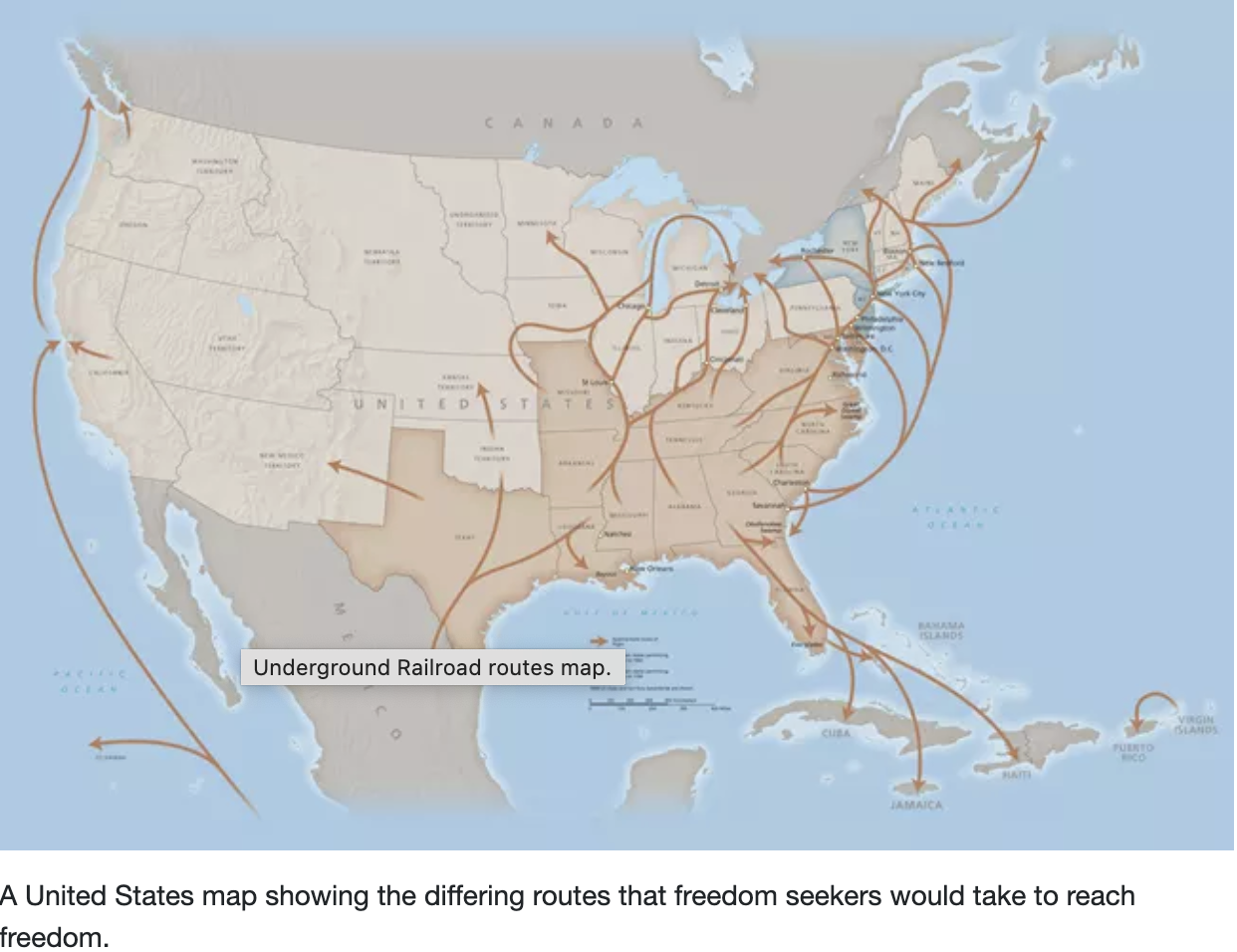Encyclopedia Dubuque
"Encyclopedia Dubuque is the online authority for all things Dubuque, written by the people who know the city best.”
Marshall Cohen—researcher and producer, CNN
Affiliated with the Local History Network of the State Historical Society of Iowa, and the Iowa Museum Association.
UNDERGROUND RAILROAD: Difference between revisions
Jump to navigation
Jump to search
No edit summary |
No edit summary |
||
| Line 16: | Line 16: | ||
Europe. (1) | Europe. (1) | ||
[[Image:underg.png|left|thumb| | [[Image:underg.png|left|thumb|350px|Map courtesy of the National Park Service]] | ||
--- | --- | ||
Revision as of 03:37, 30 January 2025
UNDERGROUND RAILROAD. National Park Service has summarized the existence of the Underground Railroad as the following:
The Underground Railroad—the resistance to enslavement through escape and flight, through the end of the Civil War
refers to the efforts of enslaved African Americans to gain their freedom by escaping bondage. Wherever slavery
existed, there were efforts to escape. At first to maroon communities in remote or rugged terrain on the edge of
settled areas and eventually across state and international borders. These acts of self-emancipation labeled slaves
as "fugitives," "escapees," or "runaways," but in retrospect "freedom seeker" is a more accurate description. Many
freedom seekers began their journey unaided and many completed their self-emancipation without assistance, but each
subsequent decade in which slavery was legal in the United States, there was an increase in active efforts to assist
escape.
The decision to assist a freedom seeker may have been spontaneous. However, in some places, especially after the
Fugitive Slave Act of 1850, the Underground Railroad was deliberate and organized. Despite the illegality of their
actions, people of all races, class and genders participated in this widespread form of civil disobedience. Freedom
seekers went in many directions – Canada, Mexico, Spanish Florida, Indian territory, the West, Caribbean islands and
Europe. (1)
---
Sources:
1. "Underground Railroad," National Park Service, Online: https://www.nps.gov/subjects/undergroundrailroad/what-is-the-underground-railroad.htm


